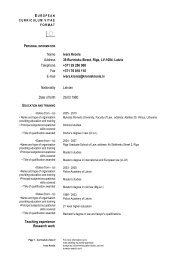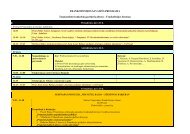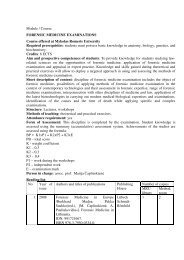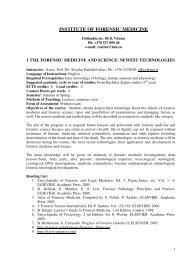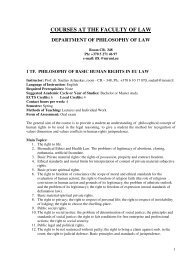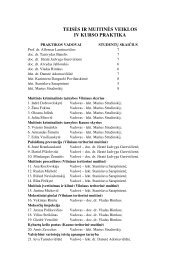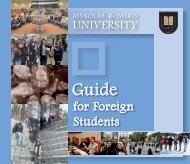SOCIAL MEDIA: CHALLENGES AND OPPORTUNITIES FOR ...
SOCIAL MEDIA: CHALLENGES AND OPPORTUNITIES FOR ...
SOCIAL MEDIA: CHALLENGES AND OPPORTUNITIES FOR ...
Create successful ePaper yourself
Turn your PDF publications into a flip-book with our unique Google optimized e-Paper software.
International interdisciplinary scientific conference /<br />
Subcommittee on Counterterrorism and Intelligence on use of social media through terrorists. Based on<br />
conceptual considerations this paper will analyse how such illicit organisations manoeuvre through social<br />
media, and address the key presumption of social networks acting as vehicles for communication, education,<br />
coordination and recruitment of and for aspiring terrorists. The paper will conclude with avenues for future<br />
research.<br />
PRESENTING THE ISTUS (INSTITUTIONAL STRATEGIES TARGETING THE<br />
UPTAKE OF <strong>SOCIAL</strong> NETWORKING IN ADULT EDUCATION) PROJECT<br />
Kirsty Palfreyman<br />
ICS, Skypark 5, 45 Finnieston Street,<br />
Glasgow G3 8JU<br />
tel. +(44) 7747673515<br />
Kirsty.palfreyman@icslearn.co.uk<br />
Various technologies and applications under the Web 2.0 umbrella have a strong impact on education<br />
– either as a challenge for digital literacy or as a tool for learning. This learning partnership intends to focus<br />
on social networks, like Facebook, MySpace or LinkedIn – or similar approaches within adult educational<br />
institutions, like Elgg or Mahara. Educational institutions have to decide how to embrace these services: Since<br />
educational institutions should provide a protected area of relationship and trust, they may further develop<br />
their virtual learning environments and thus build their own social networks. Other educational institutions<br />
opt for the integration approach in order to make use of public (and commercial) services; and thus transfer<br />
their activities of social learning and communities of practice there.<br />
The general objective of ISTUS is to elucidate experiences, conditions, criteria and arguments for this choice<br />
of strategy. We aim to foster awareness and capabilities related to the impact of these new technologies and<br />
applications – both on an individual level of educational staff and on an institutional level in adult education.<br />
We want to analyse and harness key concepts of Web 2.0 for adult education. We seek to define scenarios of<br />
a successful and efficient uptake of technologies and applications like social networks, social software, web<br />
portals and cloud computing by institutions in adult education, including those fields of life-long learning,<br />
where informal learning takes place independently of educational institutions (like in study circles).<br />
During this presentation the different stages of project work will be disseminated and discussed. This will<br />
include the groups working definition of Social Networking, findings to date and the next stages.<br />
Information on how to contact the group and where to follow progress will also be shared with the<br />
consortium.<br />
<strong>SOCIAL</strong> TECHNOLOGIES <strong>AND</strong> DISTRIBUTED LEADERSHIP<br />
Prof. Dr. Aelita Skaržauskienė<br />
Mykolas Romeris University,<br />
Ateities str. 20,<br />
LT-08303 Vilnius, Lithuania<br />
aelita@mruni.lt<br />
www.mruni.eu<br />
Purpose – This paper analyses the importance of distributed leadership in organizations and presents new<br />
organizational training practices by using social technologies. The team-based formal or informal networked<br />
or virtual (online) collaboration requires a different kind of leadership from that in positional hierarchies.<br />
Distributed leadership responses to complex situations and fosters team performance, facilitated through<br />
group interaction and decision-making, active distribution of specific tasks.<br />
7



